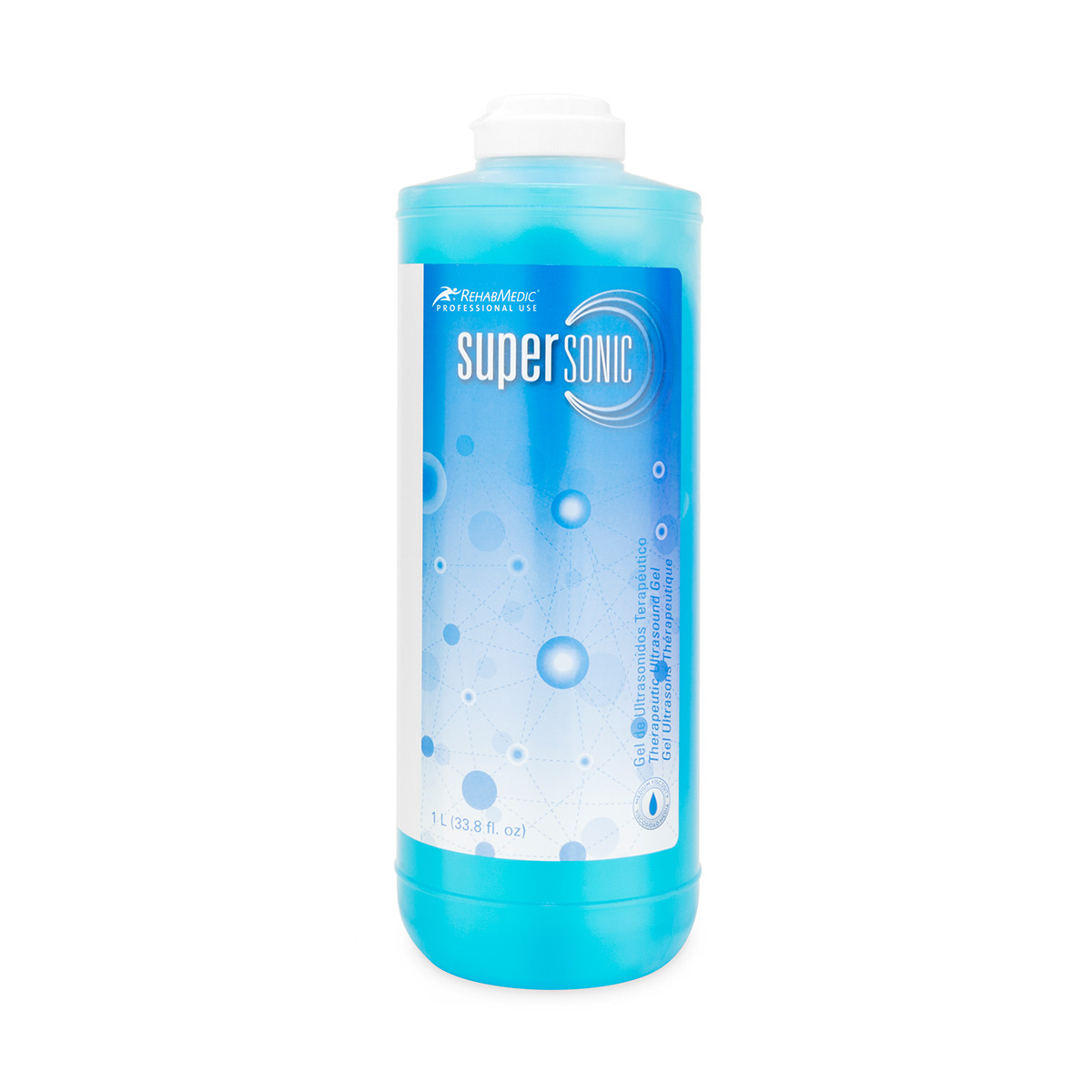Frohnradstraße 2
63768 Hösbach
Tel.+49 (0) 6021 62998-100
Fax +49 (0) 6021 62998-99
Ultrasound gel
Ultrasound is used in numerous medical fields today and enables examinations of the human body without radiation exposure. To perform a medical ultrasound examination (sonography), a special ultrasound gel is required. This is essential to prevent any air pockets between the ultrasound device and the skin and thus to obtain error-free ultrasound images. It enables the therapist or doctor to obtain accurate images on a monitor and thus detect diseases at an early stage. The ultrasound gel serves as a contact gel and is used to transmit the sound waves of the ultrasound device to the tissue of the skin. The ultrasound gel creates a stable contact between the device and the skin and facilitates easy and painless application.
Filter products

Ultrasonic gel with medium viscosity and improved formula. Further product features: Bacteria inhibiting Water soluble Hypoallergenic No additional salts, fragrances, alcohol or colorants Non-greasy Does not stain Not corrosive
What is ultrasound gel used for?
An important component of an ultrasound examination is the ultrasound gel, which is applied to the transducer of the ultrasound device before a medical examination. Ultrasound gel is an intermediate medium used in sonographic diagnostic procedures. After the gel has been applied to the ultrasound probe, the device can be placed on the skin of the area to be examined. The ultrasound gel is necessary to reduce the resistance between the air and the skin and to prevent the formation of bubbles. The sound waves emitted by the transducer are reflected by the layers of tissue in the body, picked up again by the transducer and create an electronic recording on the device. This image allows the doctor to examine the body for potential diseases or abnormalities. Without an ultrasound gel, the sound waves would not penetrate the tissue optimally because they would be almost completely reflected. With the gel, the ultrasound waves can penetrate the tissue of the skin in the best possible way and flawless examination images of the tissue structures or internal organs are displayed on the device. Ultrasound gel is also used for laser treatments in the beauty sector.
Ultrasound gel: Areas of application
Ultrasound gels can be used in numerous examinations. They are most frequently found in sonographies, i.e., medical ultrasound examinations. Sonographies are carried out to detect diseases or tissue damage and are possible almost all over the body. Especially organs rich in water and blood are examined with the help of ultrasound without radiation exposure for the body. But ultrasound gels are also used for gynaecological examinations or cosmetic treatments. The latter application in the beauty sector aims at improving the appearance of the skin. Due to the pressure of the transducer, the ultrasound waves create a warming effect on the skin and thus stimulate blood circulation and metabolism.
The following areas of the body can be examined with ultrasound:
- Internal organs in the abdominal area such as the liver, gall bladder, spleen, kidney, and intestines.
- Freely accessible muscles
- Heart
- Blood vessels
- Thyroid gland
- Lymph nodes
- Arteries and veins
- Genital organs such as uterus, testicles, and ovaries
Ultrasound gel from Rehab Medic®
The ultrasound gels from Rehab Medic® are characterised by an advanced formulation. Both the Multisonic Ultrasound Gel and the Supersonic Ultrasound Gel are bacteriostatic, hypoallergenic, water soluble and non-greasy. Both ultrasound gels have no traces of salts, fragrances, alcohol, or dyes. The main difference between the Multisonic and Supersonic ultrasound gels is that the Multisonic gel is transparent, while the Supersonic gel is blue in colour. Both gels are designed for ultrasound therapy and diagnostic imaging. The Multisonic ultrasound gel can additionally be used for muscle stimulation.
What are ultrasound gels made of?
Ultrasound gels are colourless and viscous gels that are water-based and contain a thickening agent. Because of the direct skin contact during an ultrasound examination, it is particularly important that ultrasound gels with the ingredients they contain are skin-friendly and do not contain any allergens. Furthermore, they should have the right consistency and high lubricity and conductivity and be as odourless as possible. High-quality ultrasound gels do not contain any ingredients such as formaldehyde, colourants, odorants, or UV stabilisers. Thanks to the water base, the ultrasound gel does not leave any stains on the patient's clothing and the ultrasound equipment can be cleaned easily. The patient's body can also be simply wiped with a cloth after the examination. If the ultrasound gel is to be used for examinations in the genital area, care should be taken to ensure that it has good mucosal compatibility, sterility, and adhesion.
Conclusion
Ultrasound examinations are nowadays a form of medical treatment that provide meaningful information and valuable images of human organs and structures of the body. Ultrasound examinations allow the doctor to make a precise diagnosis without exposing the body to harmful radiation. Ultrasound gels are needed to ensure smooth contact between the ultrasound device and the skin and to be able to image the examined tissue without interference. It serves as a contact gel and ensures that the sound waves are optimally reflected by the body's tissue. The ultrasound gel is indispensable for sonography to precisely depict the smallest body structures and to provide the patient with the most accurate examination results possible.
